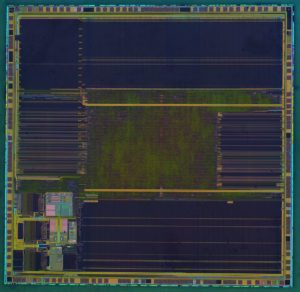 Break Microchip PIC18F4420 Microcontroller Memory
Break Microchip PIC18F4420 Microcontroller Memory
PIC18F4420 devices incorporate three separate on-chip timers that help regulate the Power-on Reset process when Crack MCU eprom. Their main function is to ensure that the device clock is stable before code is executed which can be manipulated in the process of Break Microchip PIC18F4420 Microcontroller Memory. These timers are:
• Power-up Timer (PWRT)
• Oscillator Start-up Timer (OST)
• PLL Lock Time-out
The Power-up Timer (PWRT) of PIC18F4420 devices is an 11-bit counter which uses the INTRC source as the clock input. This yields an approximate time interval of 2048 x 32 s= 65.6 ms. While the PWRT is counting, the device is held in Reset to Recover IC ST62T65C6 Software.
The power-up time delay depends on the INTRC clock and will vary from chip-to-chip due to temperature and process variation. See DC parameter 33 for details.
The PWRT is enabled by clearing the PWRTEN Configuration bit.
The Oscillator Start-up Timer (OST) provides a 1024 oscillator cycle (from OSC1 input) delay after the PWRT delay is over (parameter 33). This ensures that the crystal or resonator oscillator has started and is stable enough to clock the controller by Read MCU PIC16F688 Software. More time may be required for the oscillator to meet its frequency tolerance specification.
The OST time-out is invoked only for XT, LP, HS and HSPLL modes and only on Power-on Reset, or on exit from most power-managed modes.
With the PLL enabled in its PLL mode, the time-out sequence following a Power-on Reset is slightly differ- ent from other oscillator modes. A separate timer is used to provide a fixed time-out that is sufficient for the PLL to lock to the main oscillator frequency to support the process of Read IC Microchip PIC32MX440F512H Binary. This PLL lock time-out (TPLL) is typically 2 ms and follows the oscillator start-up time-out.
